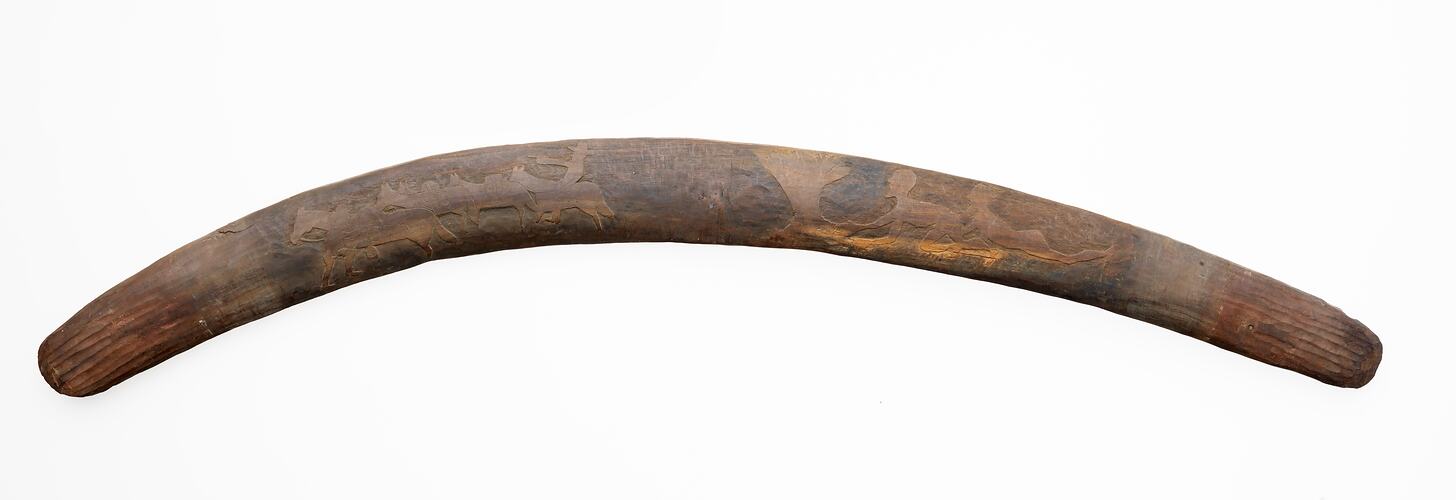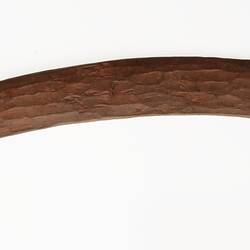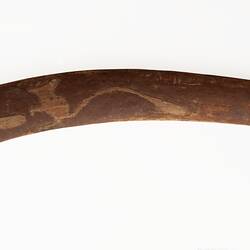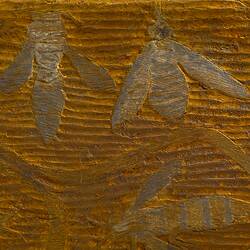Summary
Boomerang made by the Arrernte artist Jim Kite Penangke, also known as Erlikilyika (Alyelkelhayeka). Among the many objects created by Kite is this carved boomerang, depicting the first meeting of Indigenous and non-Indigenous people in Central Australia. The carved scene shows two Aboriginal men hiding behind a tree watching horse-riding Europeans. When interviewed by a journalist in Adelaide in 1913 Kite explained that when Arrernte people first saw the explorer John McDouall Stuart's party dismount from their horses they thought that centaur-like beings had split in two. The arrival of Europeans was such a momentous event that Kite decided to commemorate it in the carving of this boomerang.
Local Name
Alye
Physical Description
Boomerang. Upper side decorated with images of two stockmen and their packhorses (on left) and Aboriginal men watching on (on right).
Significance
Not only is this object a rare record of first contact with Europeans from an Indigenous perspective, it was also made by one of the pionering Aboriginal artists of the nineteenth century. The Scottish explorer John McDouall Stuart was the first European to enter the centre of the Australian continent in 1860.
More Information
-
Object/Medium
Boomerang
-
Maker
-
Cultural Groups
-
Locality
Charlotte Waters, Central Australia, Northern Territory, Australia
-
Date Produced
-
Collector
-
Date Collected
-
Object Measurements
725 mm (Length), 145 mm (Width), 10 mm (Height)
Width of the curve is 145mm; width of the actual boomerang is 60mm.
-
Explorer
-
References
[Chapter] Gibson, Jason. John McDouall Stuart Remembered in Central Australia, in Inglis, Alison, et al. Scots Under the Southern Cross. 41-52.
-
Collection Names
-
Type of item
-
Discipline
-
Category
-
Collecting Areas




